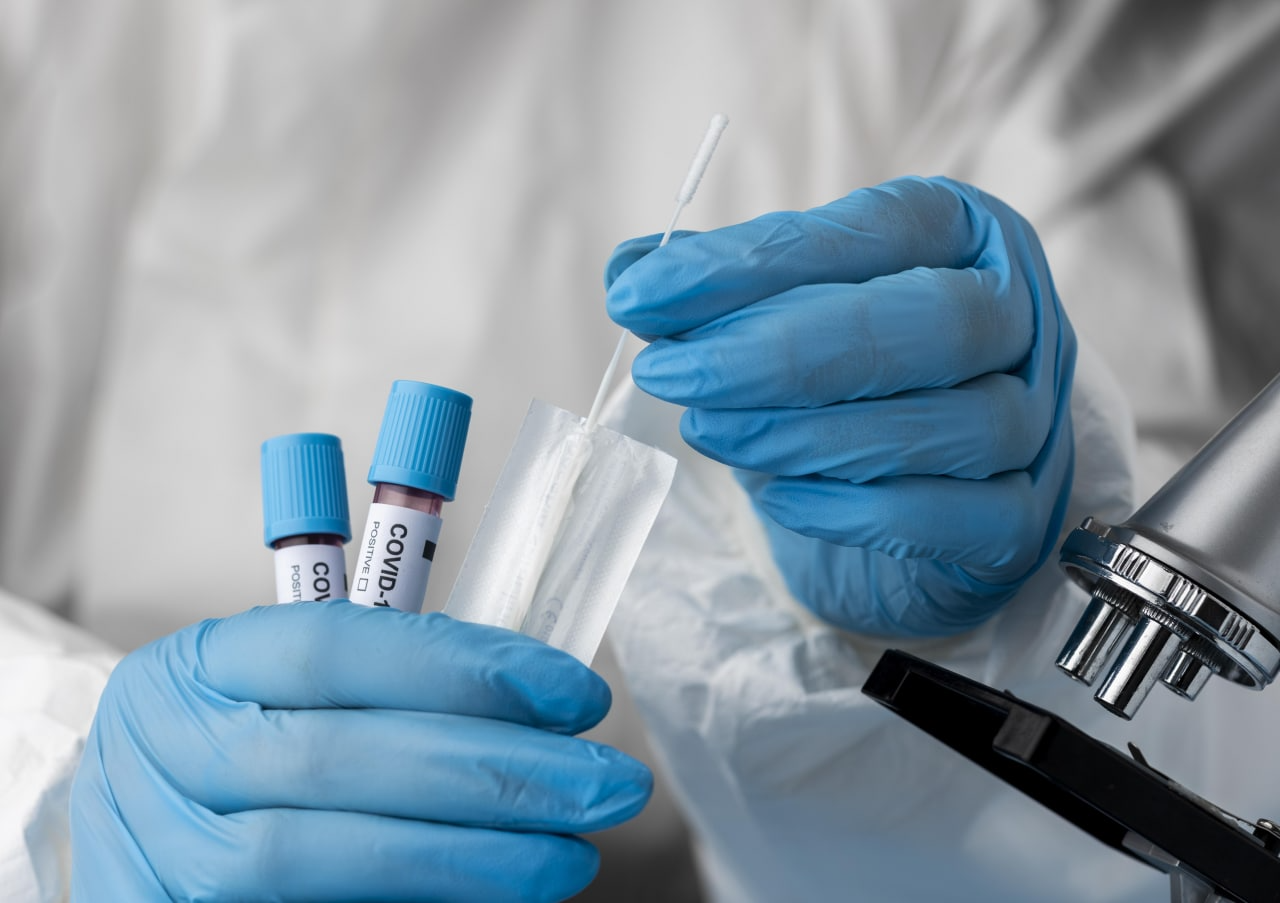Published by: Diana Luai Awad, Dr Pharmacist
Antihistamines are used to treat diseases and conditions accompanied by the release of histamine, in particular, allergic pathologies. Today, two generations of antihistamines are widely used; they have significant differences in both pharmacological properties and indications.
Histamine and its Effects
Histamine is the most important mediator of the allergic reactions with a wide spectrum of biological activity. The highest concentrations of histamine are found in the skin, lungs, and mucosa of the gastrointestinal tract. Mast cells are the main depot of histamine in tissues. The release of histamine from them occurs under the influence of various physical and chemical stimuli, but most actively – when the allergen interacts with antibodies on the surface of mast cells, that is, during an allergic reaction.
The released mediator interacts predominantly with H1-histamine receptors, showing a number of effects:
- arterioles expansion , blood pressure decrease , increase in vascular wall permeability , tissue edema, release of plasma from the vessels;
- local reddening of the skin due to vasodilation, blistering, itching;
- potent constriction of the bronchi, increased secretion of the bronchial glands;
- stimulation of the release of catecholamines by adrenal cells.
Antihistamines block the H1-receptors, preventing and stopping the effects of histamine. The blockade occurs by the mechanism of competitive inhibition, and the affinity of drugs for H1-receptors is much lower than that of histamine. Drugs do not displace histamine bound to the receptor, but only block free receptors. Therefore, antihistamines are most effective in preventing immediate allergic reactions, and in the case of developed allergies, they prevent the release of new doses of histamine.
Several classifications of antihistamines are known. According to one of the most common, there are two generations of drugs in this group.
 First-Generation Antihistamines
First-Generation Antihistamines
First-generation H1- antagonists (tab.I) are often referred to sedatives. They have been widely used in clinical practice for decades: the first available drugs of this group were developed in the 40s of the 20th century. Along with acting on H1-receptors and eliminating the effects of histamine, drugs of this group are characterized by a number of other pharmacological properties, due to which they are widely used not only for allergies, but also for many other conditions and diseases.
Sedative effect of antihistamines of the first generation is the result of their lipophilicity and the ability to penetrate the blood-brain barrier and bind to the H1-histamine receptors of the brain. In addition, sedation can be caused by blocking the central serotonin and acetylcholine receptors. The severity of the sedative effect of different drugs varies from moderate to severe. For example doxylamine use in clinical practice as a hypnotic, while clemastine, dimethindene, chloropyramine maleate can cause only slight drowsiness.
Anxiolytic effect, especially strong for hydroxyzine. It is primarily used to treat anxiety, tension.
Atropine-like effect, which is associated with the anticholinergic properties of drugs. Its classic symptoms are:
- dry mouth andnasopharynx
- urinary retention
- constipation
- tachycardia
- blurred vision.
Due to their anticholinergic effects, first-generation antihistamines are effective in non-allergic rhinitis (pheniramine maleate), but this drying effect may do more harm than good, as may their tendency to induce somnolence. The same effect is responsible for increased bronchial obstruction, which is due to an increase in the viscosity of bronchial mucus, as well as exacerbation of glaucoma and obstruction in prostate adenoma.
Antiemetic and antimotion sickness effect is most likely related to the central cholinergic action (dimenhydrinate). Some drugs reduce the stimulation of vestibular receptors, inhibit the function of the labyrinth (diphenhydramine, promethazine), and are used for motion sickness, in particular, vertigo. Because scopolamine potently prevents motion sickness, the anticholinergic properties of H1-antagonists may be largely responsible for this effect. The antiserotonin effect is most marked in cyproheptadine, which is used to treat migraine.
Most antihistamines of the first generation have a local anesthetic effect; it is associated with a decrease in the permeability of membranes for sodium ions. For example, diphenhydramine and promethazine have more powerful local anesthetic properties than procaine. However, the concentrations required for this effect are much higher than therapeutic dozes can make.
Another effect that H1-antagonists exhibit is the relatively rapid onset of the clinical effect. Some drugs use parenterally to quickly relieve of allergy symptoms (chloropyramine maleate, clemastine). All antihistamines of the first generation cause tachyphylaxis with long-term use, which determines the need for regular drug changes during long-term therapy. Tachyphylaxis, as well as a number of side effects do not allow to use this group as first line drugs for the treatment of allergic diseases.
Second-Generation Antihistamines
The drugs of this class (tab.I), unlike their predecessors, selectively act on H1-receptors and therefore practically do not have sedative and atropine-like effects. However, some drugs in this group are cardiotoxic.
Several properties are characteristic of most second-generation antihistamines:
- High affinity for H1-receptors and no effect on serotonin and acetylcholine receptors; drugs of this generation do not cause dryness of mucous membranes.
- Minimal sedative effect, which is due to the inability of drugs to penetrate the blood-brain barrier; some patients may experience moderate drowsiness while taking the drugs.
- The rapid onset of the effect and the long-term effect, which is due to the high ability to bind to proteins, accumulate in the body and slow excretion. For example, the half-life of cetirizine (Zyrtec) is 7 hours, and loratadine is 15 hours.
- No tachyphylaxis with long-term use.
- The ability to block the potassium channels of the heart muscle, which leads to a violation of the heart rhythm: ventricular tachycardia and prolongation of the QT interval. The risk of developing a cardiotoxic effect increases when combined with drugs that inhibit cytochrome P450 isoenzymes, in particular, ketoconazole, itraconazole, macrolides clarithromycin and erythromycin, as well as grapefruit juice. Loratadine, cetirizine, levocetirizine (Xyzal) do not have a cardiotoxic effect.
- Additional antiallergic effect. Second-generation drugs not only block H1-receptors, but also stabilize the mast cell membrane, reduce the production of adhesion molecules (ICAM-1), suppress eosinophil-induced release of IL-8, colony stimulating factor 2 (CSF2), sICAM-1 from epithelial cells, reduce the severity of bronchospasm induced by an allergic reaction and reduce the phenomena of bronchial hyperreactivity. Due to these properties, drugs of the second generation with long-term use are more effective than drugs of the first generation.
Second-generation antihistamines can be divided into two groups:
- Metabolized, which act after metabolism in the liver by CYP 3A4 isoenzymes of the cytochrome P450 system with the formation of active metabolites – loratadine, ebastine, terfenadine.
- Active metabolites that enter the body in the form of an active substance are cetirizine, levocetirizine, desloratadine (Aerius), fexofenadine (Telfast). Fexofenadine is an active metabolite of terfenadine. Terfenadine was a very popular antihistamine before being withdrawn from the market over safety concerns (fatal arrhythmias). The drug is not metabolized further before being excreted unchanged.
Table 1. First-Generation and Second-Generation Antihistamines
|
Generation |
Drugs |
Effects and properties |
|
I |
chlorphenamine, diphenhydramine, clemastine, doxylamine, hydroxyzine, dimethindene, chloropyramine, pheniramine maleate |
short-term effect, penetrating the blood-brain barrier, sedative effect, atropine-like effect, tachyphylaxis with long-term use. |
|
II |
loratadine, ebastine, terfenadine cetirizine, levocetirizine, desloratadine, fexofenadine |
minimal sedative, effect rapid onset of the effect and the long-term effect, no tachyphylaxis with long-term use, cardiotoxic effect |
The action of active metabolites does not depend on the activity of enzymes of the cytochrome P450 system, therefore, their effect is more predictable compared to metabolized antihistamines, and in clinical practice they are used more often in the treatment of allergic diseases.
Bibliography
- Goodman & Gilman's: The Pharmacological Basis of Therapeutics, 14th edition.
- Morris Brown, Peter Bennett. Clinical Pharmacology 11th Edition, 2012.
- Hydroxyzine. URL: https://www.drugs.com/hydroxyzine.html#uses (date of the application 23.01.2022).
- Church M. K., Church D. S. Pharmacology of antihistamines //Indian journal of dermatology. 2013; 58 (3): 219.
- Cuvillo Bernal A. et al. Comparative pharmacology of the H1 antihistamines //Journal of Investigational Allergology and Clinical Immunology. 2006; 16 (Suppl. 1): 3-12.
- Yanai K. et al. The clinical pharmacology of non-sedating antihistamines //Pharmacology & therapeutics. 2017; 178: 148-156.







